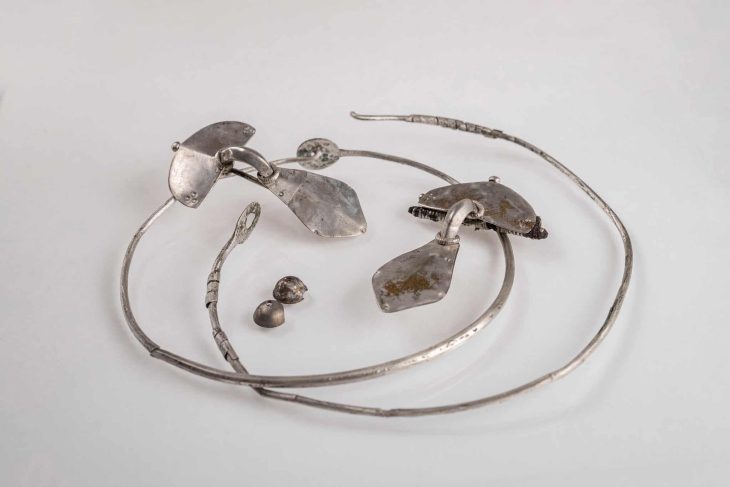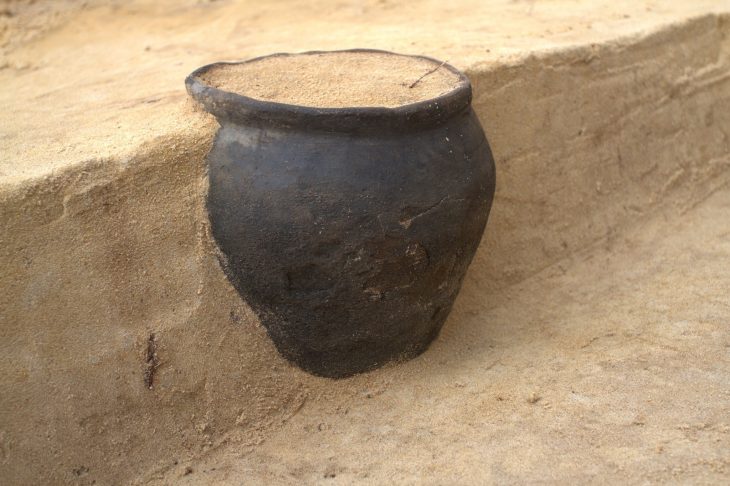An exciting discovery in northern Poland has shed light on the lives and customs of the Goths, a Germanic people who played a significant role in European history. Archaeologists working in Wda Landscape Park, near the village of Stara Rzeka, have unearthed a vast 2,000-year-old Goth burial site brimming with precious artifacts.
The extensive cemetery, estimated to cover over 2.4 acres, has yielded a treasure trove of objects from the 4th century AD. These include pottery fragments, brooches, amber beads, and a remarkable collection of jewelry. Among the most captivating finds are two well-preserved silver necklaces, two silver fibulae (decorative clasps), and elements of a necklace crafted from tiny silver beads. Notably, some of the jewelry displays intricate snake motifs.
The burials themselves fall into two categories: pit graves and urn burials. This practice of placing grave goods with the deceased aligns with known Goth funerary customs. The presence of these artifacts not only offers valuable insights into Goth craftsmanship and aesthetics but also potentially hints at the social status and beliefs of those buried.
The discovery adds to our understanding of the Goths’ presence in northern Poland, particularly their connection to the Wielbark culture, which flourished between the 1st and 5th centuries AD. This period coincides with the Goths’ rise to prominence, as they migrated across Europe and ultimately contributed to the fall of the Western Roman Empire.

The initial spark for this significant find came from an archaeologist and YouTuber, Olaf Popkiewicz, known for his channel “History Seekers.” While exploring the banks of the Wda River, Popkiewicz’s keen eye spotted glinting silver artifacts. This chance encounter led to the excavation of the site, revealing a wealth of historical treasures.
Enthusiasm for the ongoing project is evident in a recent Facebook post by Wda Landscape Park. They highlight the intensive efforts undertaken in the past three weeks, resulting in the analysis of over 250 square kilometers of the cemetery and the unearthing of 50 graves. However, the post also emphasizes that this represents only a small portion of the sprawling site.

The urgency for continued excavation stems from the potential threat to the remaining artifacts. The park authorities recognize the need for swift action to ensure the proper preservation of this invaluable historical resource.
As the excavation progresses, archaeologists hope to uncover further remains and artifacts, enriching our knowledge of this fascinating chapter in European history. This discovery serves as a testament to the enduring legacy of the Goths and the ongoing power of archaeological exploration to illuminate the past.
